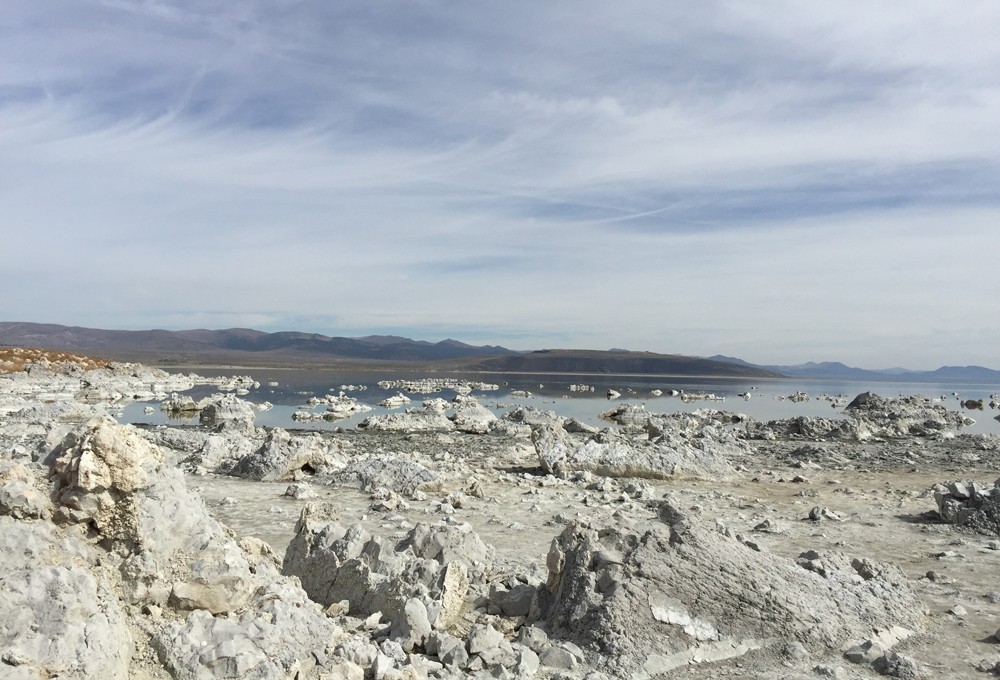
Fifth year into drought, California, one of America’s favourite states is adapting to a new lifestyle -- one without water

There are two sides to the drought in one of America’s biggest, and richest, states - on the one side it is the harbinger to what some are saying is a global climate crisis beyond man’s control and on the other, it is an example of a wealthy nation’s fight against a natural catastrophe through policy and planning.
California is entering a possible fifth year of drought and Californians are learning some new life skills that might come in handy. California is in trouble. The drought has heavily altered the state’s temperament. What was seen as a fleeting inconvenience initially has now been pronounced as an unavoidable reality.
Think of California as America’s Lahore or Karachi - from all across the country, people aspiring to a high-maintenance lifestyle throng in big numbers every year to live the dream of the world’s entertainment capital. Hollywood in California is a living incarnation of that dream. And that’s not all. Standing next to the Pacific, the state boasts the most number of country’s national parks. Known for its scenic beauty and sunny beaches, California is arguably America’s jewel state. Apart from being the home of Hollywood, and a major agricultural economy, it also characterises the international symbols of progress like Silicon Valley and tourist destinations like Los Angeles.
Before you think it’s perfect, take a look at the price tag - it is the fourth-highest tax state and is among the country’s priciest real estate market. Simply put, buying a house in a Californian suburb is like buying three in Nevada. All that might change, if ‘rain rain go away’, is a permanent state of affairs here. All that might change if water remains a priced commodity.
The drought has brought with it many firsts for Californians. As an unprecedented move, they will be legally (through executive order) required to cut back on domestic and commercial water usage. If you are familiar with American food portion size, you will understand how they tend to take the word, ‘cutback’. They obviously don’t look at us Pakistanis for inspiration because if they did, a simple schedule of hourly water loadshedding would’ve been it. For the first time, the state is asking them to let their grass go, literally. The ‘let it go’ policy encourages residents with small to large back and front yards to accept the withered brown grass as the new normal, and even beautiful, rather than one with lush green grass. Watering the grass is also to be followed by a weekly schedule.
Water usage is so important that an anonymous resident of Bel Air has become a social media celebrity for consuming 1300 gallons of water per hour. Yes, you read that right. A hunt by government and curious activists has already started for this unnamed water god.
Understandably, agriculture is most hard-hit by the drought. A five-hour drive from Los Angeles (LA) to San Francisco (SFO), gives you a look into it. A large number of billboards meet you on the way about the effect of the drought on farmers and heavy agricultural economy of Northern California. You go deeper in the North and a more scary sight of abandoned farms haunt you of a possible climatic apocalypse.
Dev, an Indian-born Sikh farmer from Fresno, about a hundred miles from SFO shared his story, "for the first time this drought has made us think of the worth of acres of land we own. For someone who only knows farming, the drought has brought many uncomfortable questions on the dinner table like, so where do we go from here if this continues?"
Jeff, a resident of North Hollywood, works with a small landscaping company. You would think in a time of drought this is a tough business to be in. Jeff disagrees. He sees the idea of landscaping in California rapidly changing under the new weather conditions. Now, "companies like ours offer drought-friendly landscaping as well as innovative techniques working with materials like rocks, gravel, granite and shrubs. Basically, something very low maintenance, but still beautiful."
People are also getting rid of pools as the government plans to increase fines on excessive water usage for domestic consumer.
Like a good-looking Hollywood hero, saving the world from doom, Al Nino is on its way. Literally meaning, ‘little boy,’ the science behind Al Nino can well be simply defined as "a lot of rain". It means drier weather in Australia, smaller monsoon in India and a much wetter winter in California. In other words, problems like cyclones, flooding and snow fall changes. Before they get carried away, Californians are reminded of how redundant this extra water will be for drought which might continue next year. This means a mix of floods and drought, not very promising! Sporadic heat waves and wildfires are looming still.
California is fighting back but the deep-set panic and vulnerability goes on to show that even the world’s richest nation cannot fall back on technology if nature was to turn her back on us. Think of a four-year drought in Africa - the people looking up the skies waiting for blue helicopters, instead of substituting their natural grass for granite and uprooting their swimming pools. If California’s drought is indeed an episode in a global climate disaster, prevention seems the only possibility!